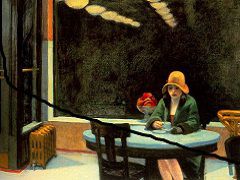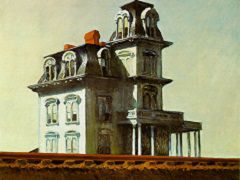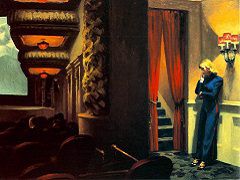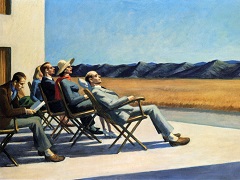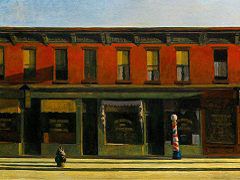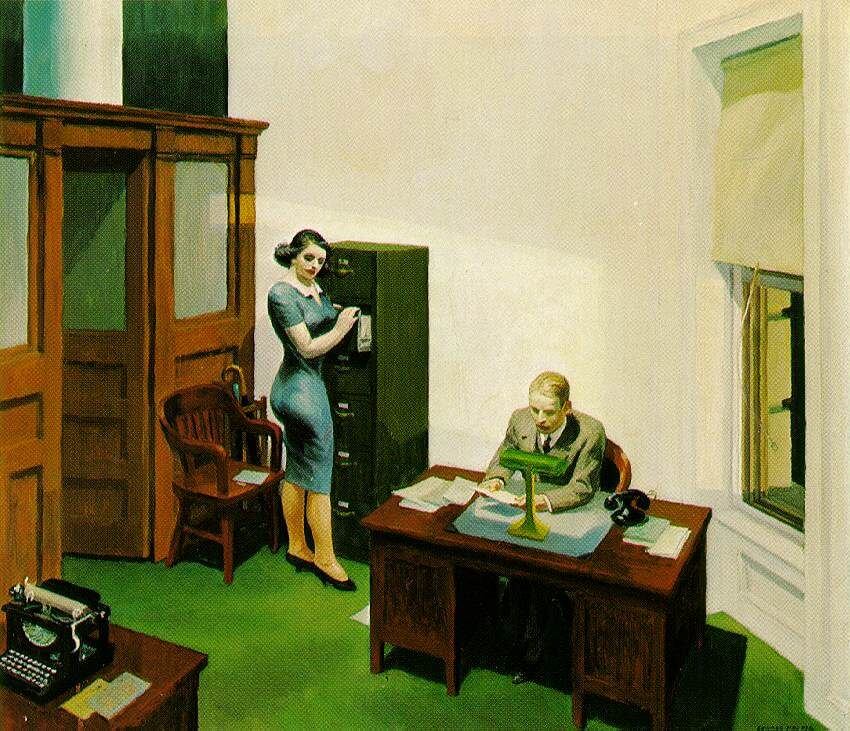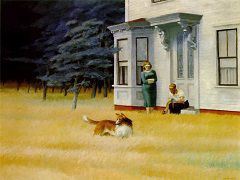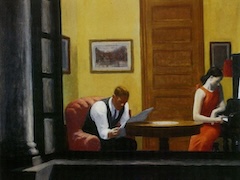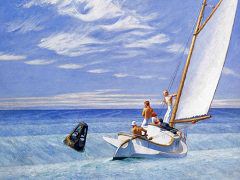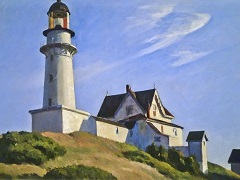Summer Evening, 1947 by Edward Hopper
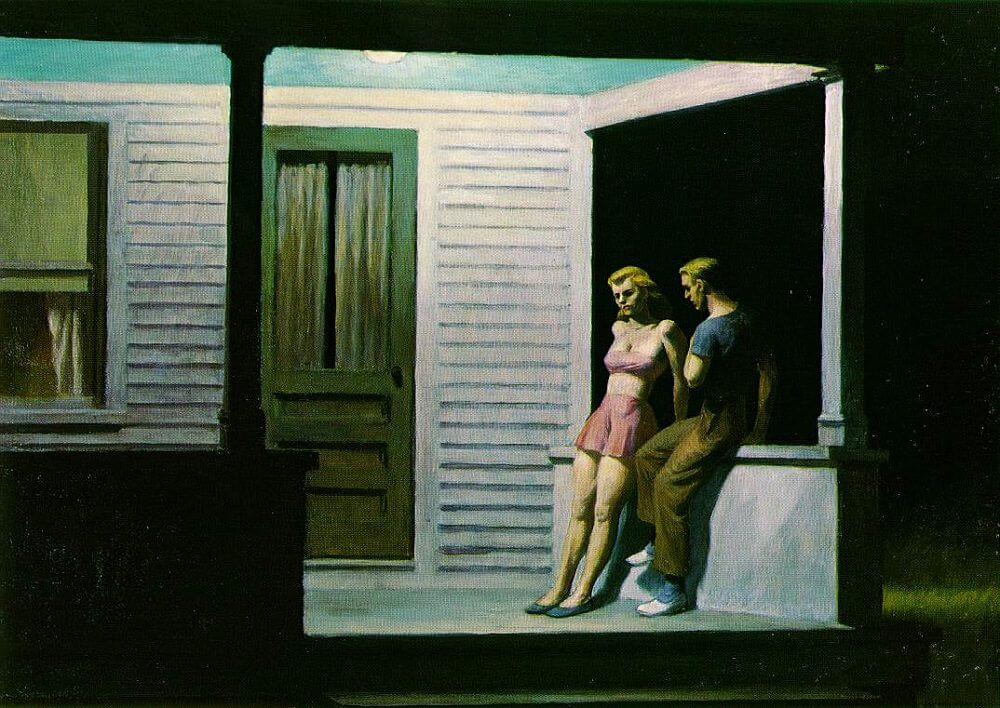
What distinction did Hopper draw between work and leisure? Comparing Office at Night with Summer Evening, it would appear that he made little distinction at all. The relationship between the two people in the office, implicit but quite obvious to the viewer, corresponds to the explicit relationship of the couple on the lighted veranda. The gaps in the curtains and the open window establish a visual link with the woman's pose and attire, which, again, simultaneously conceal and reveal. And the illumination, finally, transforms what is actually an intimate scene into a public one. "To the extent, for instance, that a person feels he must protect himself from the surveillance of others in the public realm by silent isolation, he compensates by baring himself to those with whom he wants to make contact," writes Sennett. In Hopper's eyes, the results were apparently just as unsatisfying during leisure time as at work, and human relationships as desolate as most of the landscapes and townscapes he depicted. And the later the date of the picture is, the more depressing its mood seems to be.
Thanks to the lighting, the outside space of the veranda is transformed into an intimate place. Factors familiar from other paintings play a role here as well - an interplay between concealing and revealing, the emergence of sexual tension. The curtains figure as a formal echo of the woman's attire.


